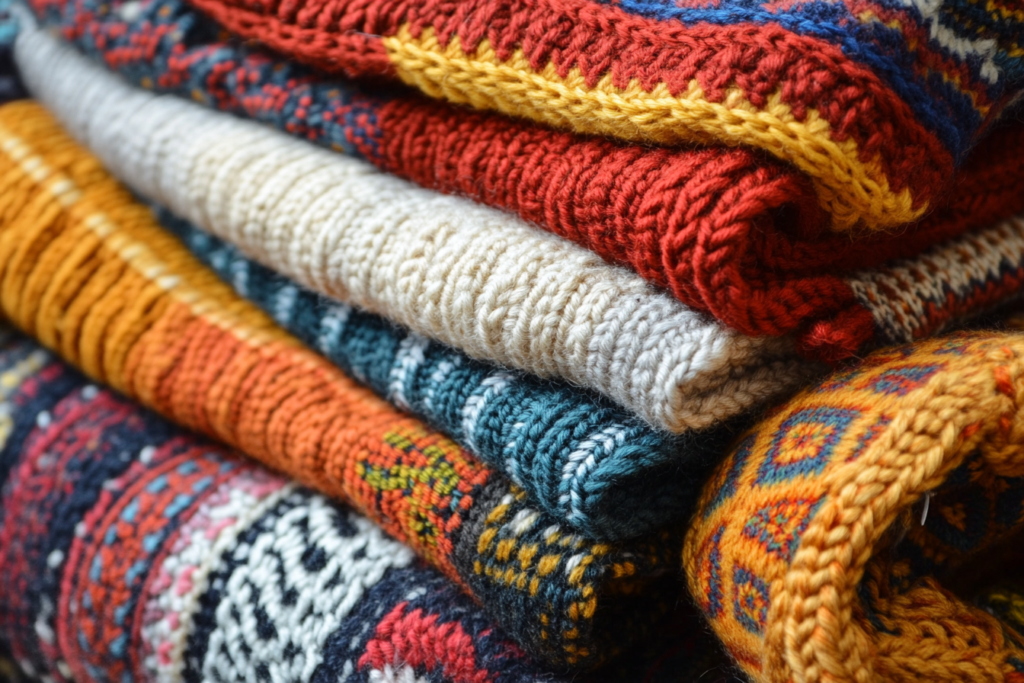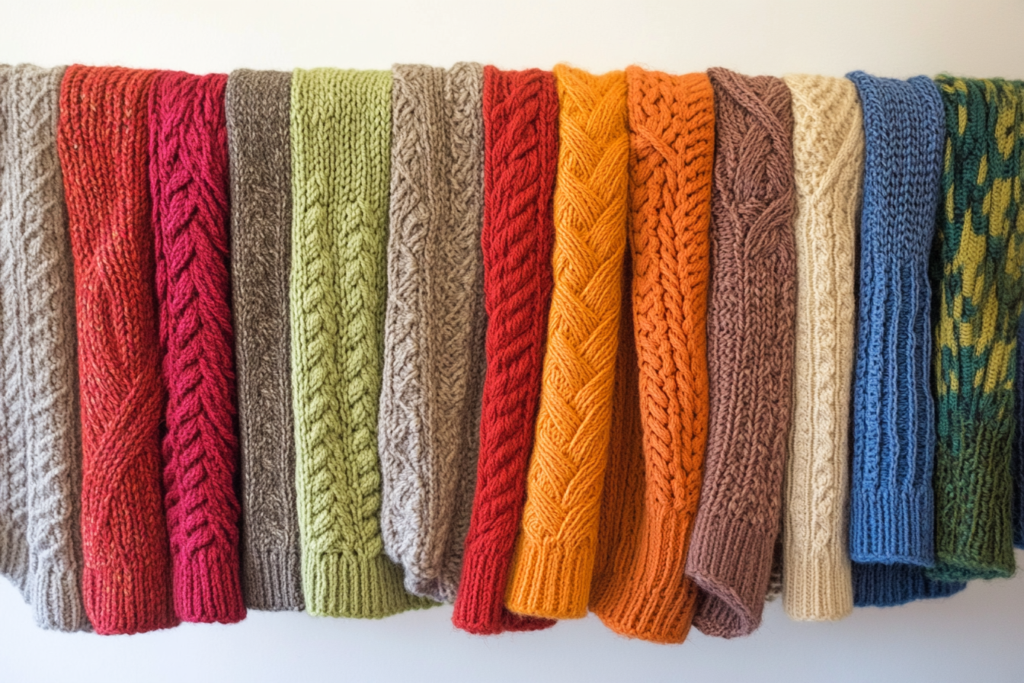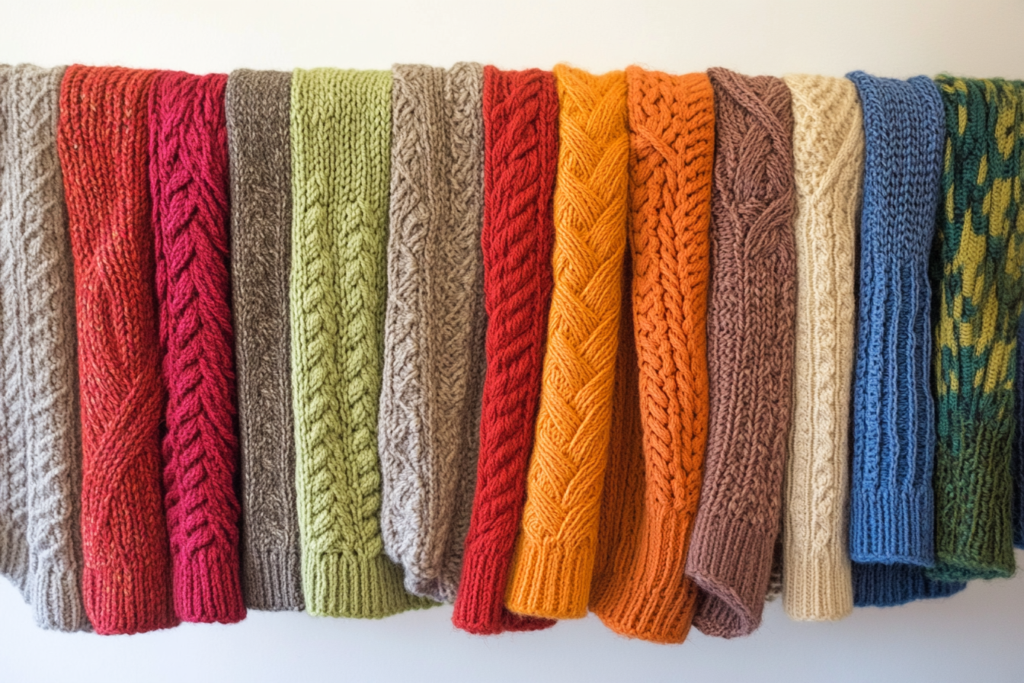Knitdowns: Essential Samples for Confirming Yarn Tension & Patterns
Meta Description: Knitdowns are sample swatches used to confirm yarn tension, weight, and patterns before bulk production. Learn how they help in quality control and fabric development.
What Are Knitdowns?
Knitdowns are small, knitted fabric samples created to test and confirm tension, yarn weight, stitch patterns, and fabric structure before full-scale garment production. These samples help designers, manufacturers, and customers evaluate how the final knit fabric will look and perform.
Knitdowns ensure consistency in knitting specifications and allow for adjustments before mass production begins, reducing errors and material waste.


Key Features of Knitdowns
✔ Small Fabric Swatches – Typically knitted in various gauges and stitch patterns.
✔ Used for Testing Yarn Properties – Evaluates tension, stretch, and durability.
✔ Helps Confirm Color & Pattern – Ensures accuracy before bulk knitting.
✔ Required in Production Approval – Helps customers verify quality and texture.
✔ Common in Sweaters & Knitwear Manufacturing – Used in fashion, textile, and fabric development.
Why Are Knitdowns Important in Fashion Production?
📌 Prevents Errors Before Bulk Production – Ensures yarn, stitch density, and texture are correct.
📌 Helps in Fabric Development & Innovation – Designers can experiment with different knitting techniques.
📌 Aids in Color & Texture Approval – Customers can see and feel the material before committing.
📌 Standardizes Production Quality – Avoids inconsistencies in yarn tension and knitting specifications.
📌 Reduces Material Waste & Costly Mistakes – Adjustments are made before final garment production.
Knitdowns vs. Other Fabric Samples
| Feature | Knitdowns | Handloom Swatches | Strike-Offs |
|---|---|---|---|
| Material Type | Knitted fabrics | Woven fabrics | Printed fabrics |
| Purpose | Confirms yarn tension, weight, and pattern | Tests weaving density and structure | Checks fabric print colors and placement |
| Common In | Sweaters, knitwear, activewear | Denim, woven textiles | Printed fabrics, graphic patterns |
| Size | Small knitted sample | Handwoven textile swatch | Printed fabric sample |
Knitdowns are specific to knitted textiles, whereas handloom swatches test woven fabrics, and strike-offs confirm printed fabric designs.
Where Are Knitdowns Used?
✔ Sweaters & Knitwear – Ensures yarn selection and pattern accuracy.
✔ Sportswear & Performance Fabrics – Confirms stretch, durability, and breathability.
✔ Fashion Prototyping & Development – Used in early design stages before garment samples are made.
✔ Luxury & High-End Knitwear – Allows fine-tuning of texture and hand feel.
✔ Textile Research & Innovation – Helps in developing new knitting techniques and materials.
How to Evaluate a Knitdown Sample
🖤 Check Yarn Tension & Weight → Ensures proper gauge and fabric density.
🖤 Examine Stitch Definition & Texture → Confirms pattern accuracy.
🖤 Assess Color Matching & Dye Absorption → Avoids shade inconsistencies in bulk production.
🖤 Test Fabric Stretch & Recovery → Determines elasticity and durability.
🖤 Confirm Softness & Hand Feel → Ensures final product meets quality expectations.
Why Knitdowns Matter in Fashion Production
✔ Prevents Quality Issues – Ensures fabric consistency before production.
✔ Saves Time & Resources – Helps identify problems early in development.
✔ Improves Communication Between Designers & Factories – Avoids misinterpretation of fabric specifications.
✔ Enhances Final Product Quality – Leads to better-fitting, long-lasting garments.
Conclusion: The Role of Knitdowns in Textile Development
Knitdowns are an essential step in knitwear production, helping designers and manufacturers verify yarn tension, pattern accuracy, and fabric quality before mass production. By allowing adjustments before full-scale knitting, they ensure that final garments meet customer expectations and maintain industry standards.
From luxury knitwear to everyday sweaters, knitdowns continue to play a vital role in textile development, innovation, and quality control.



